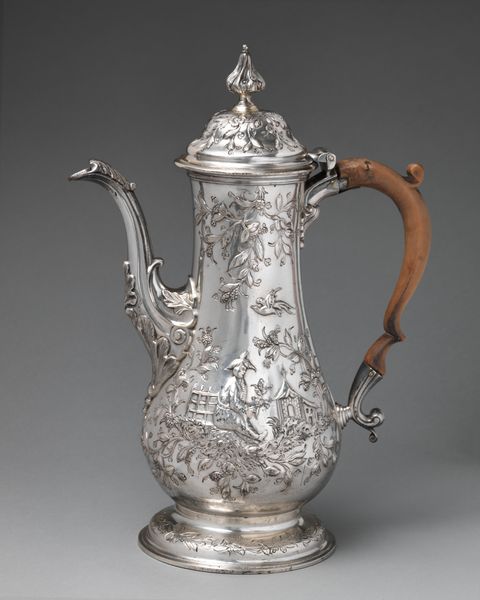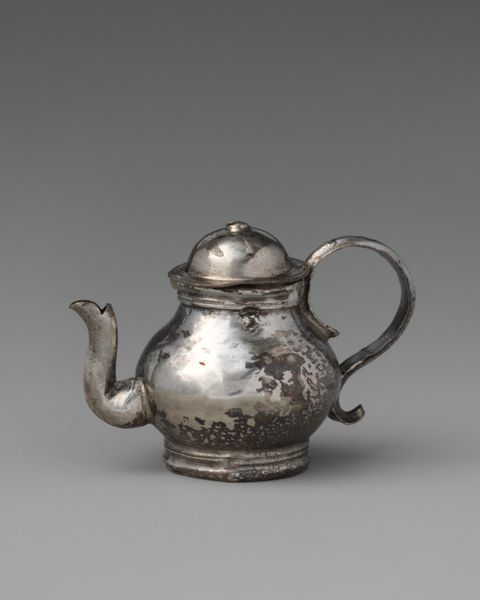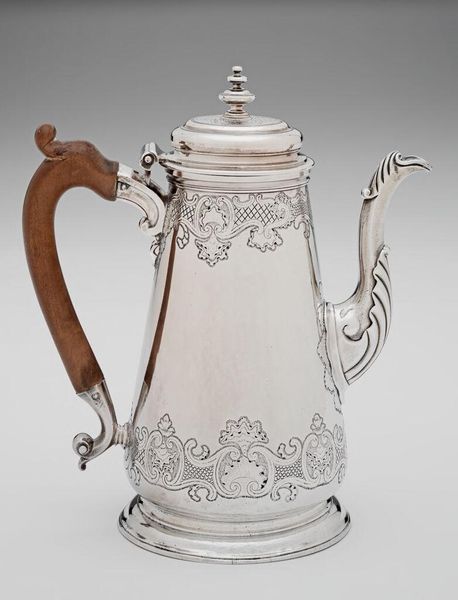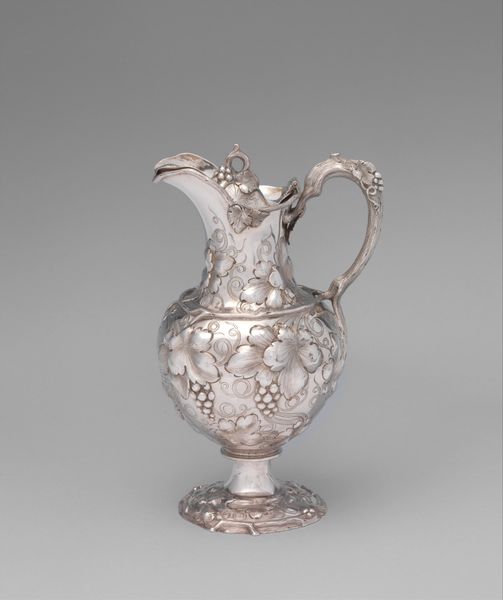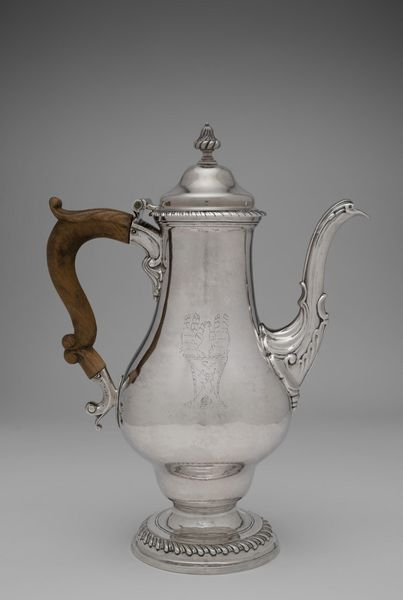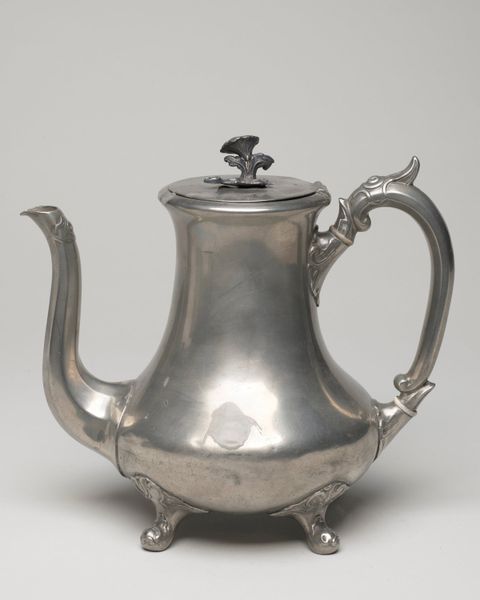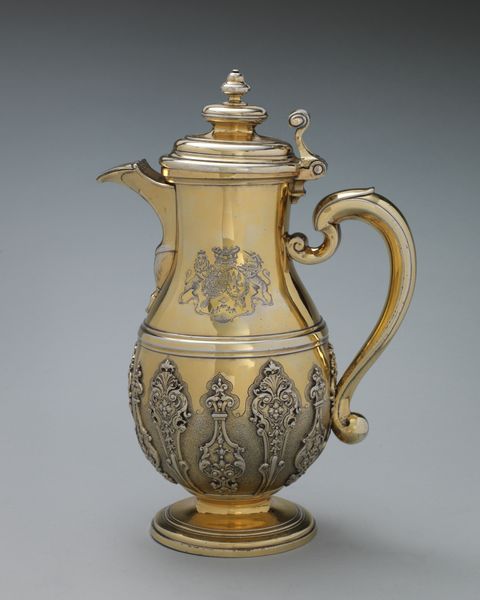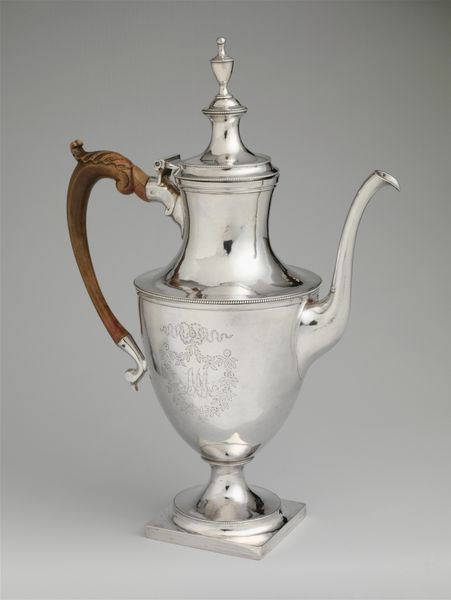
Dimensions: 9 5/16 x 8 x 4 3/8 in. (23.7 x 20.3 x 11.1 cm); 26 oz. 2 dwt. (811.5 g)
Copyright: Public Domain
Editor: Here we have a Coffeepot, crafted between 1761 and 1762, by Robert Peaston. It's a gleaming silver vessel, and I’m struck by the contrast of its bright metal against the dark wooden handle. What cultural symbols do you observe in this work? Curator: The coffeepot, though a functional object, speaks volumes about 18th-century society and aspirations. The swirling floral motifs, very typical of the Baroque style, connect to notions of cultivated nature, social grace, and burgeoning global trade. The coffeepot form itself became a signifier of refined taste and social rituals tied to the consumption of imported goods. Editor: So the act of drinking coffee became symbolic too? Curator: Precisely. Coffee moved beyond a simple beverage to represent worldly knowledge, social connection, and even leisure. This particular coffeepot, adorned with intricate detail and a finial in the form of a bird, elevated this everyday ritual to a statement of affluence and elevated status. Think about the symbolism of birds historically— freedom, divinity, elevated status. All applied to the owner of this pot, visually. Editor: I never would have considered coffee as a status symbol, but that makes sense. It’s like visual shorthand. Curator: It absolutely is. Every element – the material, the craftsmanship, the decorative program - works to communicate ideas about the owner. What stories do you think objects like these tell us about a time? Editor: Well, they certainly point to a society that valued display and associated material possessions with social standing. Thank you; I’ll look at decorative arts differently going forward. Curator: And I now have fresh thoughts about these intertwined symbols, as well. Thanks.
Comments
No comments
Be the first to comment and join the conversation on the ultimate creative platform.
